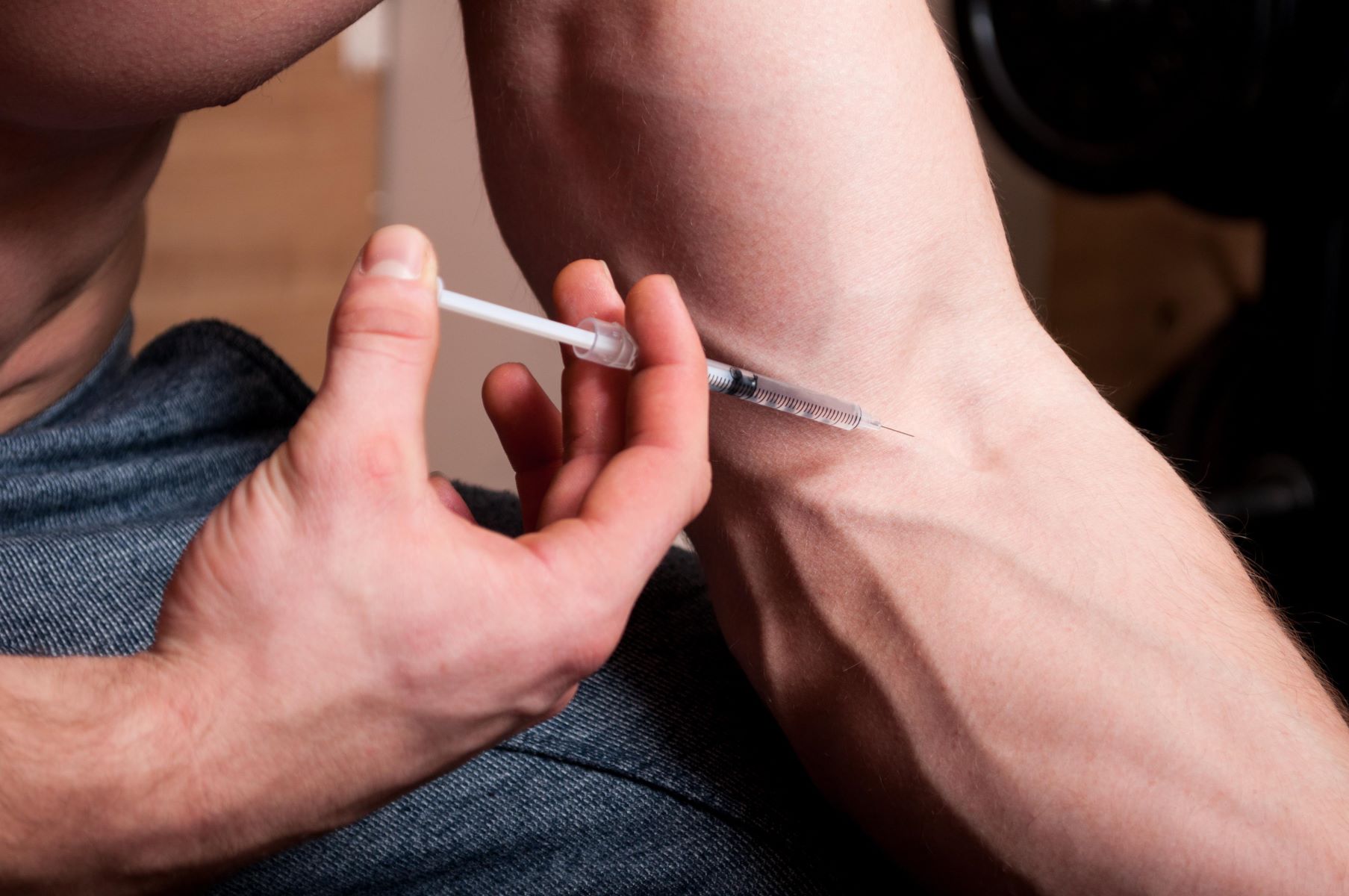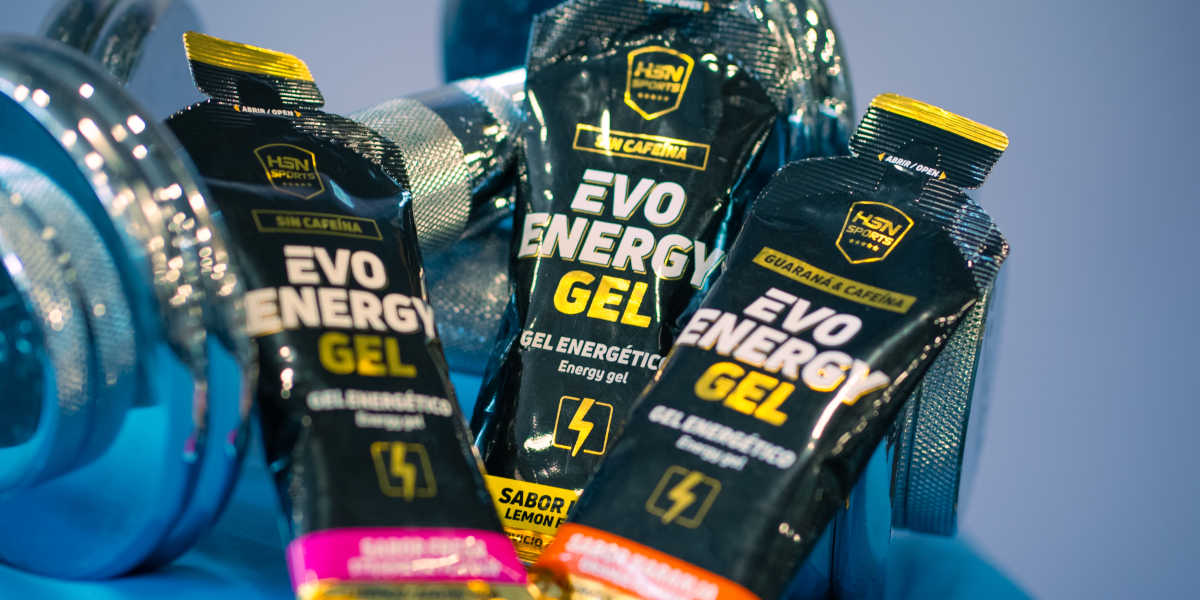Home>Misc>Featured>How Do Steroids Help Athletic Performance


Featured
How Do Steroids Help Athletic Performance
Modified: August 19, 2023
Discover how steroids can enhance athletic performance and learn about the benefits and risks associated with their use. Featured in-depth analysis and expert insights.
Introduction
Steroids, a term that holds both awe and controversy in the world of sports. For decades, athletes from various disciplines have turned to the use of steroids to boost their athletic performance. Steroids, also known as anabolic-androgenic steroids (AAS), are synthetic substances that mimic the effects of the male hormone testosterone in the body. Despite their reputation for enhancing muscle growth, their use in sports has been a subject of debate due to their potential risks and illegal status in many professional sports.
These performance-enhancing substances have gained significant attention for their ability to accelerate muscle development, increase strength, endurance, and promote faster recovery from injuries. However, their use comes with potential side effects that can have long-term consequences on an athlete’s health and well-being.
This article will delve into the world of steroids and explore how they impact athletic performance. We will discuss the different types of steroids, their mechanism of action, and the benefits they offer to athletes. Additionally, we will also shed light on the risks and side effects associated with steroid use and touch upon the legal and ethical considerations surrounding their usage in the sporting world.
It is important to note that the information provided in this article is for educational purposes only and does not encourage or endorse the use of steroids without medical supervision. The goal is to provide a comprehensive understanding of the topic and raise awareness about the potential risks involved with using these substances in sport.
Definition of Steroids
Steroids are a class of organic compounds that are characterized by a specific arrangement of four carbon rings, commonly known as the steroid backbone. These compounds are found in both plants and animals, and they play essential roles in various physiological processes. In the context of athletic performance, the term “steroids” refers to anabolic-androgenic steroids (AAS), which are synthetic substances derived from testosterone.
Anabolic refers to the muscle-building properties of these compounds, while androgenic refers to their ability to promote the development of male characteristics. Steroids are often used by athletes to enhance their physical performance and overall muscle growth.
It is important to distinguish between corticosteroids and anabolic steroids. Corticosteroids, often prescribed by doctors, are a type of steroid medication used to reduce inflammation in the body and treat various medical conditions. Anabolic steroids, on the other hand, are typically used illicitly by athletes, bodybuilders, and fitness enthusiasts to gain a competitive edge or achieve a more muscular physique.
While steroids can be taken orally, they are commonly administered through injections. These substances are available both legally, with a prescription, and illegally on the black market. In some countries, the use of steroids without a prescription is considered a criminal offense due to their potential health risks and abuse potential.
The misuse of steroids can lead to serious health complications and may result in adverse effects on the cardiovascular system, liver, hormonal balance, and mental well-being. As such, it is crucial that individuals educate themselves regarding the risks associated with steroid usage and consult with healthcare professionals before considering their use.
Types of Steroids
There are several types of steroids available, each with its specific characteristics and effects on the body. Understanding the different types can help athletes make informed decisions and be aware of the potential risks and benefits associated with each category.
1. Oral Steroids:
Oral steroids are ingested in the form of tablets or capsules and are absorbed into the bloodstream through the digestive system. These steroids undergo a process known as “first-pass metabolism” in the liver before entering the systemic circulation. Common oral steroid compounds include Dianabol, Anavar, and Winstrol. Oral steroids are popular among athletes due to their convenience and non-invasive administration.
2. Injectable Steroids:
Injectable steroids are administered via intramuscular injection, delivering the drug directly into the muscle tissue. This method allows for a higher bioavailability of the steroid, as it bypasses the liver’s first-pass metabolism. Injectable steroids often come in the form of oil-based solutions and are commonly used by athletes looking for more potent and long-lasting effects. Examples of injectable steroids include Testosterone, Trenbolone, and Deca-Durabolin.
3. Topical Steroids:
Topical steroids are generally used for medical purposes, such as treating skin conditions like eczema or inflammation. They come in the form of creams, ointments, gels, or lotions and are applied directly to the affected area. Topical steroids have minimal systemic absorption, making them less likely to affect athletic performance or muscle growth.
4. Prohormones:
Prohormones are precursors to hormones that the body can convert into anabolic steroids. Unlike synthetic steroids, prohormones are typically sold as dietary supplements, and their legality may vary from country to country. Popular examples of prohormones include 1-Androsterone and 4-Androsterone.
5. Designer Steroids:
Designer steroids are modified versions of existing steroids, created to evade detection in drug tests. These compounds are developed to provide similar effects to traditional steroids but with altered chemical structures, making them undetectable by standard testing methods. The use of designer steroids is not only illegal but also poses significant health risks due to the unknown long-term effects it may have on the body.
It is crucial to bear in mind that the use of any type of steroid, whether oral, injectable, topical, prohormone, or designer, is associated with potential risks and side effects. Athletes should consider the legal and health implications before deciding to use performance-enhancing substances and should always seek the guidance of healthcare professionals.
Mechanism of Action
The mechanism of action of steroids revolves around their interaction with androgen receptors located in various tissues, including muscle cells. When steroids, such as testosterone or its synthetic derivatives, enter the body, they bind to these androgen receptors, triggering a cascade of physiological responses.
Once bound to the androgen receptors, steroids promote protein synthesis, leading to an increase in muscle cell size and the production of new muscle tissue. This process, known as anabolism, is responsible for the muscle-building effects associated with steroid use.
In addition to promoting protein synthesis, steroids also inhibit the breakdown of protein, known as catabolism. By reducing protein breakdown, steroids help athletes maintain a positive nitrogen balance in their muscles, further contributing to muscle growth.
Furthermore, steroids increase the production of red blood cells, a process known as erythropoiesis. The heightened red blood cell count improves the delivery of oxygen and nutrients to the muscles, enhancing endurance and stamina. This increase in oxygen-carrying capacity allows athletes to push themselves harder and for a more extended period during training or competition.
Moreover, steroids have anti-inflammatory properties and can suppress the activity of immune cells involved in the inflammatory response. By reducing inflammation, steroids can aid in the recovery process, mitigating the effects of muscle damage and hastening overall healing time.
It is important to note that the hormonal effects of steroids can extend beyond muscle tissue. Androgen receptors are present in various organs and systems of the body, including the reproductive system, the cardiovascular system, and the central nervous system. This wide distribution of androgen receptors explains the potential impact of steroids on these systems and the potential for adverse side effects.
Overall, the precise mechanisms by which steroids exert their effects on athletic performance are complex and multifaceted. Their ability to enhance protein synthesis, inhibit protein breakdown, increase red blood cell production, and modulate inflammation contribute to the overall improvement in muscle growth, strength, endurance, and recovery observed in athletes who use these substances.
Benefits of Steroid Use in Athletes
The use of steroids in athletics has been associated with several perceived benefits, which have contributed to their popularity among athletes and bodybuilders. While it is important to recognize and understand these potential benefits, it is equally crucial to consider the potential risks and side effects associated with steroid use.
1. Increased Muscle Mass and Strength:
Steroids have a profound effect on muscle growth and strength. By enhancing protein synthesis and inhibiting protein breakdown, steroids promote the accumulation of lean muscle mass. This leads to an increase in muscle size, density, and overall strength. Athletes who use steroids often experience rapid gains in muscle mass, allowing them to reach their desired physique or performance goals more quickly.
2. Enhanced Endurance and Stamina:
Steroids can significantly improve an athlete’s endurance and stamina. By increasing the production of red blood cells, steroids enhance oxygen-carrying capacity, fueling muscles and delaying fatigue. This enables athletes to train harder and perform at a higher intensity for more extended periods, ultimately boosting their athletic performance.
3. Quicker Recovery from Injuries:
Steroids have potent anti-inflammatory properties, which can aid in the recovery process after injuries. By reducing inflammation and suppressing immune responses, steroids help alleviate pain, swelling, and tissue damage. Additionally, they promote tissue repair and regeneration, allowing athletes to bounce back from injuries more rapidly and resume their training or competition sooner.
4. Improved Performance and Competitive Advantage:
The use of steroids provides athletes with a significant competitive edge. By increasing muscle mass, strength, endurance, and recovery capacity, athletes can push their physical limits and perform at a higher level. This can be especially beneficial in sports that require explosive power, such as weightlifting, sprinting, or martial arts, allowing athletes to exceed their natural capabilities and excel in their respective disciplines.
It is crucial to note that while steroid use may offer these perceived benefits, they come with potential risks and side effects. Athletes should carefully consider these factors, taking into account the potential impact on their long-term health and the ethical implications of using performance-enhancing substances.
Increased Muscle Mass and Strength
One of the primary reasons athletes turn to steroid use is the desire to increase their muscle mass and overall strength. Steroids have a significant impact on muscle growth, allowing athletes to attain a more muscular physique and achieve heightened athletic performance.
When anabolic steroids are introduced into the body, they interact with androgen receptors in muscle cells, initiating a series of cellular processes. One of the key effects of steroids is the stimulation of protein synthesis, which is the process by which new proteins are built in the body. By increasing protein synthesis, steroids promote the growth and repair of muscle tissue, resulting in an increase in muscle mass.
In addition to promoting protein synthesis, steroids also have an inhibitory effect on protein breakdown. This means that while steroids facilitate the building of new muscle proteins, they also limit the breakdown of existing proteins. This positive nitrogen balance contributes to the overall growth and preservation of muscle tissue.
Furthermore, steroids enhance the retention of nitrogen within the muscles. Nitrogen is a critical component of amino acids, which are the building blocks of protein. By increasing nitrogen retention, steroids ensure a sufficient supply of amino acids for muscle growth, recovery, and repair.
The increase in muscle mass gained from steroid use is often accompanied by a significant boost in strength. Steroids can improve muscle strength by increasing muscle fiber size, enhancing neuromuscular efficiency, and improving muscle contractility. These effects allow athletes to exert more force and power during their training sessions and competitions.
It is important to note that the extent of muscle mass and strength gained from steroid use can vary depending on various factors, such as the individual’s genetics, training program, nutrition, and dosage of steroids. Additionally, consistent and intense resistance training is crucial to maximize the effects of steroids on muscle growth and strength.
While increased muscle mass and strength can certainly provide athletic advantages, it is essential to approach steroid use with caution and consideration of the potential risks and side effects involved. Steroid use should always be supervised by healthcare professionals to ensure proper dosing and minimize adverse health outcomes.
Enhanced Endurance and Stamina
Endurance and stamina are crucial factors for athletes in disciplines that require prolonged physical exertion. Steroids have been shown to have a positive impact on these aspects of athletic performance, enabling athletes to push themselves harder and perform at a higher level for extended periods.
One of the primary ways that steroids enhance endurance is by increasing the production of red blood cells. Red blood cells are responsible for carrying oxygen from the lungs to the muscles, where it is utilized for energy production. By increasing the red blood cell count, steroids enhance the oxygen-carrying capacity of the blood, allowing for improved delivery of oxygen to the working muscles.
The increased oxygen supply to the muscles has several benefits. First, it enables the muscles to produce energy more efficiently during exercise, delaying the onset of fatigue. Athletes who use steroids often report feeling less fatigued during intense training sessions or endurance events, allowing them to sustain their performance for longer durations.
Second, the improved oxygen delivery also aids in the removal of metabolic waste products, such as lactic acid, from the muscles. These waste products can contribute to the onset of muscle fatigue and discomfort. With enhanced oxygenation and better waste product clearance, athletes can maintain higher levels of performance and experience less muscle fatigue and soreness.
Moreover, steroids have been shown to increase the levels of enzymes involved in energy production within the muscles. This results in more efficient energy production, enabling athletes to generate greater power output and maintain their performance at higher intensity levels. This is particularly beneficial in sports that require sustained efforts, such as long-distance running or cycling.
The effects of enhanced endurance and stamina achieved through steroid use can provide athletes with a competitive advantage, particularly in endurance-oriented sports. Athletes may experience improved race times, increased time to exhaustion, and the ability to sustain higher workloads during training.
It is essential to note that, while steroids can offer these potential benefits, they should not be seen as a substitute for proper training, nutrition, and recovery. Training methodologies that specifically target endurance and stamina, along with proper nutrition and rest, are vital for maximizing the effects of steroids on athletic performance.
Lastly, it is of utmost importance to be aware of the potential risks and side effects associated with steroid use. Athletes should carefully consider the health implications and adhere to appropriate dosages and administration protocols under the supervision of healthcare professionals.
Quicker Recovery from Injuries
One of the perceived benefits of using steroids in athletics is their potential to expedite the recovery process after injuries. Steroids have been shown to possess anti-inflammatory properties and promote tissue repair, enabling athletes to return to their training or competition sooner.
When an injury occurs, typically inflammation follows as part of the body’s natural healing response. Inflammation helps to protect the injured tissue and initiates the repair process. However, excessive or prolonged inflammation can impede healing and prolong recovery time. Steroids can modulate the inflammatory response, preventing excessive inflammation and aiding in the resolution of inflammation.
Steroids reduce inflammation by suppressing the activity of immune cells involved in the inflammatory response, such as neutrophils and macrophages. By inhibiting the production of pro-inflammatory substances, steroids can alleviate pain, swelling, and redness associated with injuries. This reduction in inflammation can enhance an athlete’s comfort and facilitate the healing process.
In addition to their anti-inflammatory properties, steroids also play a role in tissue repair and regeneration. They have been shown to promote the synthesis of collagen, the main structural protein in connective tissues such as tendons and ligaments. This can accelerate the healing of soft tissue injuries and support the restoration of strength and functionality.
Furthermore, steroids have been found to increase the production of growth factors such as insulin-like growth factor-1 (IGF-1), which is involved in tissue repair and regeneration. These growth factors can stimulate cell growth and the formation of new blood vessels, contributing to the healing process.
By promoting inflammation resolution, collagen synthesis, and the production of growth factors, steroids can aid in the recovery of various types of injuries, including muscle strains, ligament sprains, and tendonitis. Athletes who use steroids often report a faster return to training or competition, allowing them to resume their athletic pursuits more quickly.
However, it is crucial to exercise caution and consult with healthcare professionals when considering the use of steroids for injury recovery. While steroids may speed up the healing process, they should not replace proper rehabilitation protocols, which include rest, physiotherapy, and gradual return to activity. Additionally, the potential risks and side effects associated with steroid use should be carefully weighed against the benefits, taking into consideration the athlete’s long-term health and wellbeing.
Improved Performance and Competitive Advantage
Athletes who use steroids often seek to gain a competitive edge and improve their overall performance. Steroids have been shown to provide several physiological benefits that can enhance an athlete’s abilities and confer a competitive advantage in various sports.
1. Increased Muscle Mass and Strength:
Steroids promote significant gains in muscle mass and strength, which can directly translate into improved athletic performance. With greater muscle mass, athletes can generate more force, resulting in explosive power and enhanced performance in activities requiring strength and power output, such as weightlifting or sprinting.
2. Enhanced Endurance and Stamina:
Through the increase in red blood cell production and improved oxygen delivery to the muscles, steroids can improve an athlete’s endurance and stamina. This allows them to perform at a higher intensity for longer durations and maintain a competitive edge in endurance sports such as long-distance running or cycling.
3. Faster Recovery:
Quicker recovery from intense training sessions or injuries provides athletes with a competitive advantage. Steroids can expedite the recovery process by reducing inflammation, promoting tissue repair, and alleviating pain. This enables athletes to resume training sooner, adapt more effectively to their training stimuli, and achieve better performance outcomes.
4. Increased Focus and Aggression:
Steroids are known to affect mood and behavior. Some athletes report an increase in focus, aggression, and competitive drive when using steroids. This enhanced mental state can contribute to improved performance, enabling athletes to push beyond their perceived limitations and perform at peak levels.
5. Greater Training Intensity:
The physical benefits of steroid use, such as increased muscle mass and strength, allow athletes to train at a higher intensity. With the ability to handle heavier weights and train at higher volume, athletes can further stimulate muscle growth and develop skills specific to their sport. This additional training stimulus can lead to improved performance outcomes.
It is essential to note that while the use of steroids may offer these potential benefits, their use is regulated and prohibited in most sports organizations. Athletes who choose to use steroids to gain a competitive advantage may face severe consequences, including fines, suspensions, and damage to their reputation.
Additionally, it is crucial to consider the potential risks and side effects associated with steroid use, including hormone imbalances, liver damage, cardiovascular problems, and psychological effects. The decision to use steroids should be made in consultation with healthcare professionals and with a thorough understanding of the potential short-term and long-term implications.
Ultimately, focusing on proper training, nutrition, recovery, and legal performance enhancement methods within the bounds of fair play is of utmost importance in achieving improved performance and maintaining a competitive edge in sports.
Risks and Side Effects of Steroid Use
While steroids can offer potential benefits in terms of performance enhancement, it is essential to be aware of the potential risks and side effects associated with their use. The misuse of steroids can have significant implications for an athlete’s health and well-being, both in the short-term and the long-term.
1. Hormonal Imbalance and Steroid Dependency:
One of the major concerns with steroid use is the disruption of hormonal balance in the body. Steroids can suppress the natural production of hormones such as testosterone, leading to a hormonal imbalance. This can result in decreased testicular function, infertility, and the development of feminine characteristics in males. In females, steroid use can lead to irregular menstrual cycles, development of male characteristics, and changes in libido.
Additionally, long-term use of steroids can disrupt the body’s natural ability to produce hormones, leading to a dependency on exogenous steroid use. This can result in withdrawal symptoms and difficulty in regaining normal hormonal function once steroid use is discontinued.
2. Liver Damage and Cardiovascular Problems:
Steroid use has been associated with the potential for liver damage, including the development of liver tumors and jaundice. Certain oral steroids, in particular, can place excessive strain on the liver. Long-term use of steroids may also contribute to the development of cardiovascular problems, such as high blood pressure, increased risk of heart attacks, and an unfavorable shift in cholesterol levels.
3. Psychological Effects and Behavioral Changes:
Steroids can have profound effects on an individual’s mood and behavior. Some users report experiencing increased aggression, irritability, and mood swings, commonly referred to as “roid rage.” Depression, anxiety, and paranoia have also been reported in some cases. These psychological effects can negatively impact an individual’s relationships, mental well-being, and overall quality of life.
4. Musculoskeletal Problems:
The rapid development of muscle mass and strength that comes with steroid use can place increased stress on the musculoskeletal system. This can lead to an increased risk of tendon and ligament injuries, as the strength gains may surpass the body’s structural capacity to handle the increased loads.
5. Other Potential Side Effects:
Other potential side effects of steroid use include acne, hair loss, increased risk of infection, stunted growth (in adolescents), and a reduction in natural testosterone production. The severity and likelihood of these side effects can vary depending on factors such as the type of steroid used, the dosage, the duration of use, and individual genetic predispositions.
It is crucial to understand that all of these risks and side effects are not exhaustive and can vary depending on individual circumstances. Athletes should be well-informed and consider the potential health implications before deciding to use steroids. It is important to work closely with healthcare professionals to mitigate risks and monitor any potential adverse effects.
Hormonal Imbalance and Steroid Dependency
One of the significant risks associated with steroid use is the potential for hormonal imbalance and dependency on these substances. Steroids, particularly anabolic steroids, can disrupt the body’s natural hormone production and have profound effects on endocrine function.
When external steroids are introduced into the body, they can suppress the natural production of hormones such as testosterone. The body interprets the presence of these exogenous hormones as a signal that it no longer needs to produce them internally. This can lead to a decrease in endogenous hormone production, a process known as “hypogonadism.”
In males, the suppression of testosterone production can result in testicular atrophy, decreased sperm production, and infertility. It can also lead to the development of feminine characteristics, such as breast tissue enlargement (gynecomastia) and a reduction in facial and body hair growth. In females, steroid use can disrupt the menstrual cycle, leading to irregular periods or even complete cessation of menstruation. Females may also experience the development of male characteristics, such as deepening of the voice and growth of facial hair.
It is important to note that the severity and reversibility of these hormonal imbalances depend on various factors, including the dosage and duration of steroid use, individual genetics, and age. Some hormonal imbalances may resolve on their own once steroid use is discontinued, while others may require medical intervention to restore normal hormonal function.
One concerning aspect of steroid use is the potential for dependency and withdrawal symptoms. Prolonged use of steroids can lead to a reliance on exogenous hormones, as the body becomes accustomed to the elevated levels provided by the external source. When an individual attempts to discontinue steroid use, they may experience withdrawal symptoms, including fatigue, irritability, depression, and a decrease in libido.
The dependency on steroids can make it challenging for individuals to regain normal hormonal function. It may take time for the body to readjust and resume its natural hormone production. In some cases, hormone replacement therapy may be required to restore hormonal balance and mitigate withdrawal symptoms.
It is crucial for individuals considering steroid use to understand these potential risks and consult with healthcare professionals to monitor hormonal levels and address any imbalances that may arise. Regular monitoring of hormone levels and working with healthcare professionals experienced in hormone management can help mitigate the risks associated with hormonal imbalance and steroid dependency.
Liver Damage and Cardiovascular Problems
One of the significant risks associated with the use of steroids, especially oral steroids, is the potential for liver damage. The liver plays a crucial role in various metabolic processes, including the metabolism and detoxification of drugs and substances in the body.
Oral steroids pass through the liver during digestion and are subject to a process called “first-pass metabolism.” This process exposes the liver to a higher concentration of steroids, increasing the risk of liver damage. Prolonged use of oral steroids can lead to hepatotoxicity, which is characterized by liver inflammation, liver enzyme abnormalities, and in some cases, liver tumors.
Additionally, steroids can affect lipid metabolism in the body, leading to adverse effects on cholesterol levels. Steroid use has been associated with an increase in low-density lipoprotein (LDL) cholesterol, commonly known as “bad” cholesterol, and a decrease in high-density lipoprotein (HDL) cholesterol, known as “good” cholesterol. This unfavorable shift in cholesterol levels can raise the risk of cardiovascular problems, including an increased susceptibility to heart attacks and other cardiovascular diseases.
Steroids can also contribute to high blood pressure, another cardiovascular risk factor. The mechanisms by which steroids elevate blood pressure are complex and may involve increases in salt and water retention, alterations in blood vessel tone, and effects on the renin-angiotensin-aldosterone system. The combination of elevated blood pressure and unfavorable cholesterol levels can further increase the risk of cardiovascular events.
It is important to note that the degree of liver damage and cardiovascular problems associated with steroid use can vary depending on several factors. These include the type of steroid used (oral versus injectable), the dosage and duration of use, individual genetic predispositions, and the presence of other risk factors such as pre-existing liver or cardiovascular conditions.
Given the potential risks, it is crucial for individuals considering steroid use to undergo regular medical monitoring, including liver function tests and lipid profile assessments. Healthcare professionals can help identify early signs of liver damage or cardiovascular problems and provide appropriate guidance and interventions.
Furthermore, athletes should be mindful of other lifestyle factors that can impact liver health and cardiovascular function, such as alcohol consumption, smoking, and inadequate nutrition. Taking proactive steps to maintain a healthy lifestyle and minimizing other risk factors can help reduce the potential harm associated with steroid use.
Educating oneself about the potential risks and regularly communicating with healthcare professionals is vital to mitigate the potential liver damage and cardiovascular problems associated with steroid use. Safely managing these risks can help individuals make informed decisions about their health and well-being when considering the use of performance-enhancing substances.
Psychological Effects and Behavioral Changes
The use of steroids can have a significant impact on an individual’s mood, behavior, and overall psychological well-being. Steroids can cause various psychological effects, ranging from increased aggression to mood swings and altered emotional states.
One of the well-known psychological effects of steroids is the occurrence of “roid rage.” Some individuals who use steroids may experience heightened levels of aggression, irritability, and anger. This aggressive behavior can manifest in various ways, including verbal and physical confrontations, outbursts of anger, and impulsive actions. It is important to note that not everyone who uses steroids will experience roid rage, and the severity of these psychological effects can vary from person to person.
In addition to aggression, steroid use has been associated with mood swings. Individuals may experience sudden changes in mood, ranging from euphoria and a heightened sense of well-being to episodes of depression and anxiety. These mood swings can impact an individual’s overall mental stability and quality of life.
Steroids can also lead to psychological dependence and addiction. Individuals may become psychologically reliant on steroids to maintain their physical appearance or athletic performance. This dependence can manifest as a compulsive need to use steroids, even in the absence of medical necessity or athletic competition.
Furthermore, the effects of steroids on the brain can contribute to changes in self-perception and body image. Individuals may develop distorted body image perceptions, leading to an obsession with achieving a particular physique. This can result in behaviors such as excessive training, strict dieting, and the use of other substances to enhance physical appearance.
It is important to note that the psychological effects of steroid use can vary based on individual predispositions, dosage, duration of use, and other factors. Individual susceptibility to these psychological effects may also be influenced by underlying mental health conditions or personal history.
Seeking support from healthcare professionals, such as psychologists or psychiatrists, can be beneficial for individuals who experience psychological side effects from steroid use. Counseling, therapy, and support groups can aid in addressing and managing the psychological impact of steroid use.
Furthermore, adopting healthy coping mechanisms, stress management techniques, and maintaining a stable support system can help individuals mitigate the potential negative psychological effects associated with steroid use.
An open and honest dialogue with healthcare professionals is crucial for individuals considering or using steroids. It allows for the identification and monitoring of potential psychological effects and can help individuals make informed decisions about their overall health and well-being.
Legal and Ethical Considerations
The use of steroids in sports raises important legal and ethical considerations. While the regulations surrounding the use of steroids may vary by country and sports organization, it is essential for athletes to be aware of the potential consequences and implications of using these substances.
Legal Considerations:
In many countries, the non-medical use of steroids is considered illegal and a violation of controlled substance laws. Possessing, distributing, or obtaining steroids without a valid prescription can lead to legal consequences, including fines, imprisonment, and damage to an individual’s personal and professional reputation. Athletes can face severe penalties, including disqualification from competition, if they are found to have used steroids in violation of anti-doping policies and regulations set forth by sports organizations.
Ethical Considerations:
The use of steroids also raises ethical concerns within the realm of sports. The use of performance-enhancing substances can be seen as a form of cheating, as it provides athletes with an unfair advantage over their competitors who choose to adhere to natural methods of training and development. This can undermine the principles of fair play, integrity, and equal opportunity that are fundamental to competitive sports.
Moreover, the use of steroids can pose risks to an athlete’s health and well-being. Individuals must weigh the potential short-term gains in performance against the potential long-term consequences on their overall health. Additionally, the pressure to use steroids to achieve desired results can create a culture of drug dependency and perpetuate the cycle of doping in sports.
It is important for athletes to consider the moral and ethical implications of their choices, not only for their personal integrity but also for the integrity of the sport they participate in. Ethical guidelines and codes of conduct set by sports organizations aim to ensure fairness, health, and equality among athletes. Adhering to these principles is crucial for maintaining the integrity of the sport and the spirit of competition.
Education and awareness are key in promoting ethical decision-making and deterring the use of steroids in sport. Athletes should be informed about the potential consequences, both legal and ethical, of using steroids. They should also be educated about alternative, natural methods of training and performance enhancement that are consistent with the spirit of fair play and the principles of sportsmanship.
Furthermore, sports organizations and governing bodies play a crucial role in enforcing anti-doping policies, providing education, and actively promoting fair and ethical practices within their respective sports. Collaboration between these organizations, healthcare professionals, and athletes can help create a culture that values clean competition and upholds the integrity of the sport.
Ultimately, athletes should strive to achieve their goals through legal, ethical, and natural means, prioritizing their long-term health, personal growth, and the spirit of fair competition.
Steroid Testing and Anti-Doping Measures
In order to maintain the integrity of sports and ensure fair competition, anti-doping measures, including steroid testing, have been implemented by sports organizations and governing bodies. These measures aim to detect and deter the use of prohibited substances, including steroids, among athletes.
Steroid Testing:
Steroid testing involves the analysis of biological samples, such as urine or blood, to detect the presence of steroids or their metabolites. Testing methods have become increasingly sophisticated and can detect a wide range of steroids, including both endogenous and exogenous substances.
These tests can identify the use of both traditional anabolic steroids and other related substances, such as designer steroids or prohormones, that are specifically included in the list of banned substances. Testing protocols may vary depending on the sport and the organization conducting the tests, but rigorous quality control measures are often in place to ensure accuracy and reliability of the results.
Anti-Doping Measures:
In addition to steroid testing, anti-doping measures encompass a broader range of efforts aimed at enforcing fair play and promoting clean competition. These measures include education and awareness programs, policy development, and the establishment of rules and regulations that govern the use of performance-enhancing substances.
Anti-doping measures also encompass the establishment of doping control agencies and the adoption of the World Anti-Doping Code (WADA) by many sports organizations. WADA is an international organization that sets standards and coordinates anti-doping efforts globally. It establishes the list of prohibited substances and methods, outlines the testing procedures, and defines consequences for violations.
Athlete whereabouts programs have also been implemented, requiring athletes to provide up-to-date information on their location to facilitate out-of-competition testing. This further enhances the ability to detect and deter steroid use, considering that some substances may be used during periods when athletes are not expected to be tested during competition.
Strict penalties and sanctions are imposed on athletes who test positive or are found guilty of using steroids. These penalties may include fines, suspensions, disqualification from competitions, and the stripping of titles, medals, and records. The severity of the penalty depends on factors such as the athlete’s history of violations and the nature of the offense.
While anti-doping measures and steroid testing play a crucial role in safeguarding the integrity of sports, they face ongoing challenges. Advancements in doping techniques, the emergence of new substances, and the constant cat-and-mouse game between athletes and testing authorities necessitate continuous improvement and adaptation of anti-doping efforts.
Education and awareness programs for athletes, coaches, and support staff are essential components of anti-doping initiatives. By promoting a strong anti-doping culture, athletes can make informed decisions, understand the potential consequences of using steroids, and uphold the principles of fair play and sportsmanship.
A collaborative effort between sports organizations, governing bodies, athletes, healthcare professionals, and anti-doping agencies is crucial in combatting the use of steroids and maintaining the integrity of sports. It is an ongoing process aimed at leveling the playing field, protecting the rights and health of athletes, and preserving the essence of fair competition.
Conclusion
The use of steroids in athletics has been a topic of much debate, with potential benefits and risks surrounding their use. Steroids, when used responsibly and under medical supervision, can provide athletes with increased muscle mass, strength, enhanced endurance, and faster recovery from injuries. These advantages can potentially lead to improved athletic performance and a competitive edge in sports.
However, it is crucial to recognize and address the potential risks and side effects associated with steroid use. Hormonal imbalances, liver damage, cardiovascular problems, psychological effects, and the risk of dependency are among the significant concerns that athletes need to consider. Legal and ethical considerations also necessitate careful evaluation, as steroid use is often prohibited and can have legal consequences, damage an athlete’s reputation, and undermine the principles of fair competition and sportsmanship.
Anti-doping measures and steroid testing play a vital role in maintaining the integrity of sports. These initiatives aim to detect and deter the use of prohibited substances, including steroids, among athletes. Through comprehensive testing protocols, athlete whereabouts programs, education efforts, and strict penalties, anti-doping measures seek to promote fair play, protect the health and rights of athletes, and uphold the principles of clean competition.
Ultimately, athletes must make informed decisions based on their own values, goals, and understanding of the risks and benefits associated with steroid use. Prioritizing long-term health, well-being, and ethical principles can guide athletes in their pursuit of optimal performance within the boundaries of fair play and respect for themselves and the sport they participate in.
It is essential for athletes to consult with healthcare professionals experienced in sports medicine, adhere to legal regulations and policies, and stay informed about advancements in anti-doping efforts. By doing so, athletes can make responsible choices, ensure their own safety, and contribute to the preservation of the integrity and spirit of sports.








